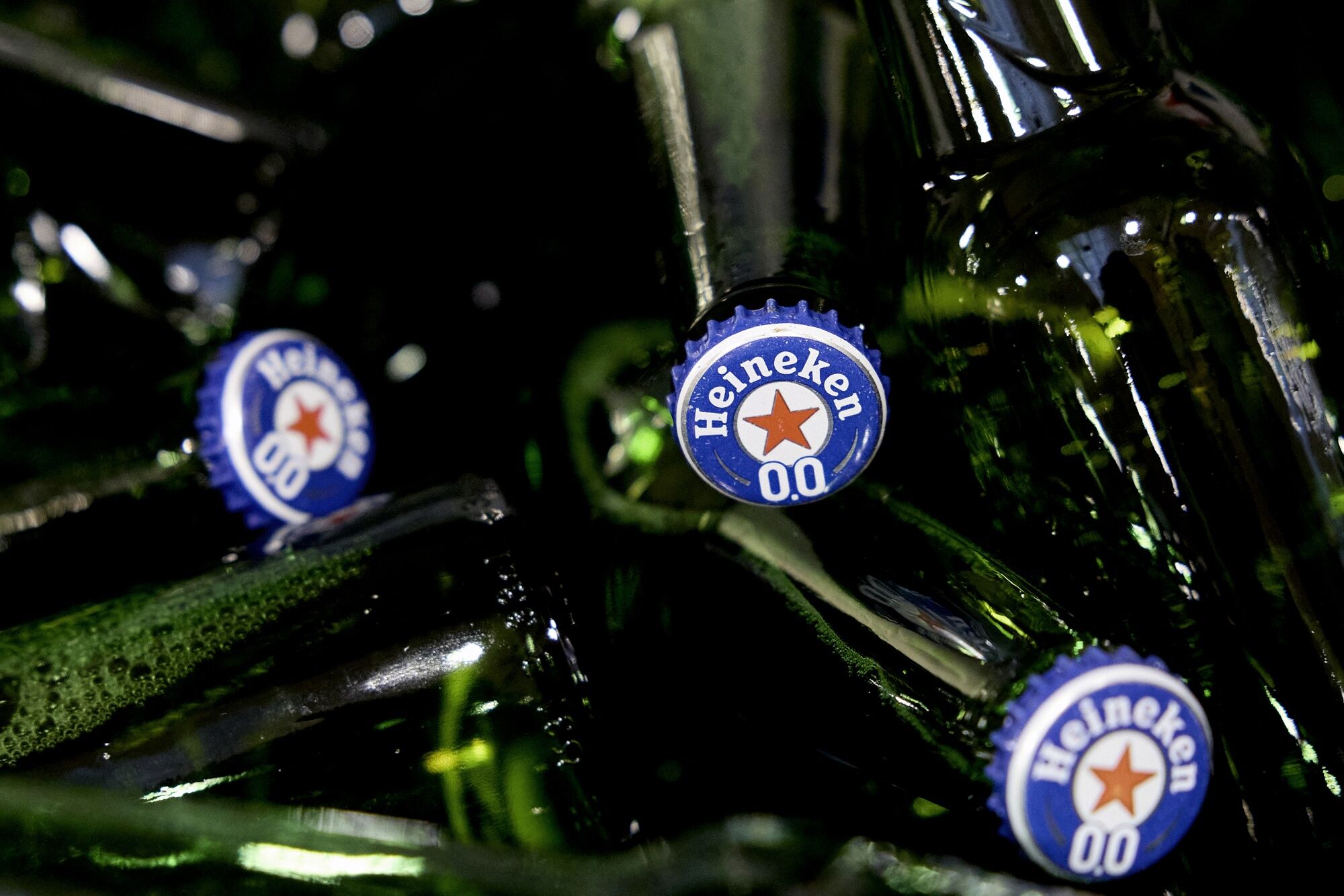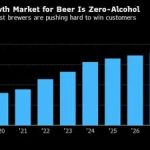

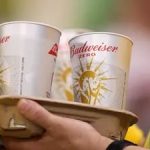
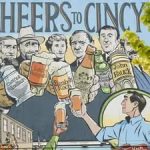
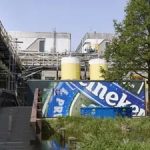
Bloomberg — Beer bottles with the five Olympic rings are already starting to come off the production line at Anheuser-Busch InBev NV’s Belgian factory, in preparation for the Paris Olympics this summer.
One hundred years have passed since the Summer Olympic Games in the French capital and the city intends to leave its mark after the Tokyo Games, held in virtually empty stadiums as a result of the Covid-19 crisis.

Besides, For the first time in history, there will be a sponsoring beer of an event that represents the summit of sporting achievements of humanity.
Read more: Heineken warns that inflation will affect beer demand this year
However, in this case, the beer, Corona Cero, does not contain alcohol.
The largest beer manufacturer in the world has decided to announce to billions of sports fans a non-alcoholic beer that was only marketed in Europe two years ago.
AB InBev hopes to take advantage of the Paris Games, which are expected to be one of the great marketing opportunities never seen before in the Olympics, to strengthen its position in the only sector of the global beer industry that is truly growing.
Valued at $13 billion and rising, brands from Heineken to Guinness, and now Corona Cero, They see a cohort of health-conscious consumers, many young people, others older and eager to get out of the alcohol culture – whose wallets they can take advantage of.
Brewmasters have been working on formulas to try to replicate the taste and texture of the real thing. Heineken, Guinness and Budweiser are already available non-alcoholic, while hundreds of craft brewers and newer brands are emerging to target this market.
For Michel DoukerisCEO of AB InBev, is very simple: “The consumer has changed.”
The non-alcoholic beer, or beer with an alcohol content of less than 0.5%, is a tiny corner of the market, its 31.4 million hectoliters annually dwarfing the 1.93 billion hectoliters of alcoholic beer, according to GlobalData Plc.
But it has had a compound annual growth rate of 3.6% since 2018, compared to 0.3% for alcoholic beer. In the US, adults ages 18 to 34 who say they drink have fallen from 72% in the early 2000s to 62%, according to Gallup.
These are figures that companies cannot ignore, especially AB InBev. She is already falling behind and says that will not reach the target of 20% of sales come from beer with low or no alcohol content by 2025.
“There are many sporting events, such as the Olympic Games, in which the flagship brands are usually the 0% variant,” he says. Susie Goldspink responsible for insights on low- and no-alcohol beers at market research company IWSR. “That’s partly because it’s a growing sector, but it also helps with their responsible consumption moderation agenda.”
Read more: The 11 best beers of 2023, chosen by someone who tried 879 in the year
There is also a broader benefit for brewing companies. Since their non-alcoholic versions often share the same name and labeling as the original beer, promotions help raise brand awareness and allow companies to circumvent increasingly strict restrictions around alcohol advertising.
Olympics They are part of a trend to promote non-alcoholic beers through sport, such as Heineken 0.0 with Formula 1 and Diageo Plc’s Guinness 0.0 in the Six Nations rugby tournament. Carlsberg A/S distributed 400,000 cans of the French non-alcoholic beer last year Tourtel Twist in the Tour de France cycling race.

And in a sign of competition between brands, Carlsberg is positioning Tourtel Twist as the non-alcoholic beer of choice at the Paris Games.
“We are the official beer of Paris and France,” he declared. Jacob Aarup-Andersen, CEO of Carlsberg. “They are the official beer of the Olympic movement. Tourtel will be served at events.”
The American company Athletic Brewing Co., which only sells non-alcoholic beverages, says that an Olympic sponsorship benefits the entire category.
“Sometimes to move the needle you need bigger players who can help drive awareness,” he said. John Walkerco-founder of the company.
For beverage companies, there is a pressing need to keep pace with the changing trends that have already spelled the death knell for many businesses. More than 7,000 UK pubs have closed in the last decade, according to the British Beer and Pub Association. While alcohol taxes, rents, costs and regulations have played a role, so have changes in drinking habits.
As consumers, particularly the social media-driven demographics of Generation Z and millennials, They seek to moderate their alcohol consumption, It is better to have a viable and attractive offer rather than turning to a rival brand, soft drink or water.
Read more: Paris Olympics could generate an economic boost of US$12 billion
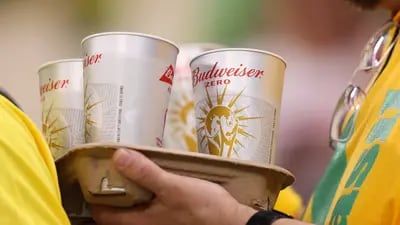
Heineken 0.0 is the global non-alcoholic beer market leader, according to GlobalData. Other big sellers are Japan’s Suntory All-Free and Brahma 0.0%, owned by AB InBev.
The world’s oldest operating German brewery has been producing non-alcoholic beers since the early 1990s. But in 2020, thanks to increased demand, Bavarian-owned Weihenstephan more than doubled its non-alcoholic beer capacity, betting for future growth. Today, its non-alcoholic wheat beer represents almost 10% of sales and its third best-selling product.
But all the promotion in the world can only go so far if non-alcoholic beer is no good.
Until relatively recently, non-alcoholic beer compared poorly to the original, which left drinkers dissatisfied. For brewers, there was a technical conundrum: how to achieve depth of flavor without alcohol. Do you prevent the beer from forming alcohol during the fermentation process or do you remove it after brewing an undiluted version?

According to Jim Koch, president of the Boston Beer Company, which brews Samuel Adams, advances in flavor have only been possible in recent years, when brewers discovered a low-temperature distillation process. The brewery introduced its own non-alcoholic product, Just The Haze, in 2021.
Launched in 2017, Heineken 0.0 is brewed with water, barley malt, hop extracts and yeast – the same ingredients used for Heineken. The alcohol is extracted by vacuum distillationafter which natural flavors and aromas are mixed again so that the flavor is more similar to the original.
“For a couple of years I refused to start developing Heineken 0.0,” he said. Willem van Waesberghe Heineken World Brewing Master. “Because he had never had a good one.”
Read more: How much money will track gold medals earn at the 2024 Olympics?
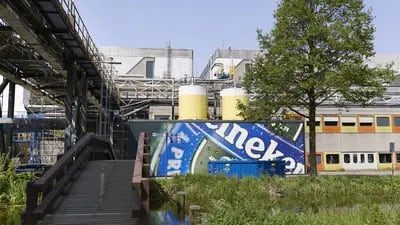
The Olympic Games will begin in two months and the opening ceremony will take place on July 26. AB InBev He will soon announce the details of his campaignwhich hopes to “accelerate the growth of non-alcoholic beer.”
Beyond that, it is expected that having non-alcoholic draft beer represents the next leap in terms of volumes, increasing bar sales by making drinks more socially acceptable. It’s yet another technical challenge, but one that the brewers are working on.
“It’s like rosé, in the south of France it’s always better than at home,” said Waesbergheen. “In a bar they like it on tap, it gives you the impression of authenticity.”
Read more on Bloomberg.com

